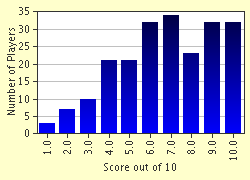Quiz Answer Key and Fun Facts
1. What is the modern name of the country where Boudica lived?
2. Of what tribe was Boudica the queen?
3. Although her legend has spawned thousands of pages of writing, written historical records of Boudica are found in only two classical sources. Who were these two writers?
4. Who was Boudica's husband?
5. Following the death of her husband, his lands were confiscated by the Romans. What happened to Boudica and her daughters?
6. In response to her treatment by the Romans, Boudica raised a rebellion against them, destroying three cities. Which were they?
7. Eventually, Boudica's forces were defeated by a heavily outnumbered Roman contingent led by this Roman. Who was he? Hint - he shares a name with a famous Roman historian.
8. Where did the battle in which Boudica and her forces were defeated take place?
9. Defeated in battle, what happened next to Boudica, according to Tacitus?
10. Boudica's name probably comes from the Celtic word "bouda" which means victory. Not surprisingly, she was adopted as a national heroine during the reign of another British queen. Who was this queen?
Source: Author
bexze
This quiz was reviewed by FunTrivia editor
bloomsby before going online.
Any errors found in FunTrivia content are routinely corrected through our feedback system.


